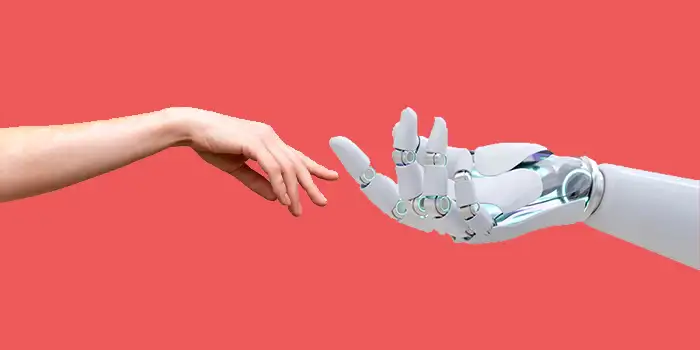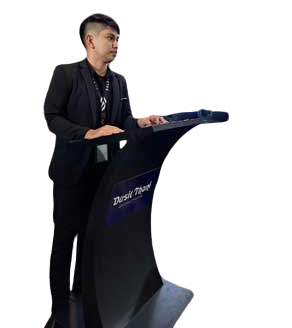When I was a kid, I realized that not everyone could afford to acquire any kind of technology because it was considered a luxury at that time.
I even recall spending hours in the library doing research for school assignments because my parents didn’t buy me a computer yet.
Technology and equality are about the intersection between advancements in technology and the pursuit of equal opportunities and treatment for all individuals regardless of their race, gender, or other characteristics. This seeks to understand and address these complicated dynamics, as well as to encourage the creation of technology that is inclusive, accessible, and beneficial to all members of society.
In this guide, you’ll learn:
- Does technology promote equality?
- The Digital Divide
- The role of technology in advancing equality
- Challenges of technology to equality
- Future directions for technology and equality
Does technology promote equality?
The answer to whether technology promotes equality is difficult and relies on many things.
On the other hand, technology can improve the playing field and promote equality for individuals regardless of their origin, geography, and social status.
For example, there are digital technologies today such as online education and e-learning platforms that improved the education industry.
It made it more accessible and inexpensive that allows students to obtain the skills and information that will help them in their future jobs and enhance their social standing in society.
Similarly, emerging digital health technologies today like telemedicine have the potential to increase the accessibility of healthcare for underprivileged and rural regions.
On the other hand, technology also has the potential to worsen the current inequalities as well as to generate new ones.
There is a so-called “digital divide”, which we’ll go through in further detail later, referring to the unequal distribution of technology and internet access, which might give a disadvantage to some areas and people.
For example, low-income and rural populations may lack access to high-speed internet and digital gadgets, placing them at a disadvantage in terms of education, employment, and healthcare.
Furthermore, technology may be biased and reflect the same inequalities and prejudices that are present in society, perpetuating discrimination and injustice.
Therefore, whether technology promotes equality or not, is determined by how it is used, who has access to it, and how it is produced and executed.
While technology has the potential to promote equality and provide possibilities for more people, it requires thoughtful efforts and investments to ensure that it is utilized equitably and responsibly which benefits everyone.
The Digital Divide
The digital divide is about the gap between people who have access to digital technology like the internet and personal gadgets and those who do not.
This gap has the potential to worsen existing inequalities such as those in education, healthcare, and employment prospects. These would lead to creating barriers to social and economic growth.
Growing up, I witnessed firsthand the digital divide. While our family had a computer and internet connection, many of my classmates did not.
This made it difficult for students to perform internet research projects, and they sometimes had to depend on outdated textbooks or insufficient material.
As a result, some of my classmates struggled to keep up with their assignments, and the performance gap between those who and those who did not have access to digital technology widened.
Today, the digital gap continues to affect many individuals and communities. Accessibility to high-speed internet and personal devices might be limited in rural locations and low-income communities, making it difficult to finish studies, look for jobs, or access healthcare information.
In some cases, individuals may need to travel far places just to access the internet. They will for cafes and public libraries with computer access, which can be a significant barrier to education and economic opportunities.
The role of technology in advancing equality
Technology can help advance equality in a variety of ways. For example, it can contribute to breaking down barriers to education and employment by providing access to resources and opportunities that were previously unavailable.
This is especially critical for historically marginalized groups including low-income people, people of color, and women who may confront systematic obstacles to access and opportunity.
Another excellent illustration of how technology is increasing equality is the usage of online learning platforms. Anyone can access educational resources and courses through these platforms regardless of their location or economic position.
This can help level the playing field and give more fair access to educational opportunities, especially for those who cannot afford to attend traditional schools or colleges.
Technology may also be utilized to promote more inclusion and diversity in a variety of businesses, including the technology industry itself.
Several technology organizations, for example, have undertaken diversity and inclusion programs to increase the participation of marginalized communities in their workforce.
In what way? Technology has reduced bias and discrimination by removing human decision-making from certain processes such as resume screening or job interviews.
Here are some other examples of how technology is advancing equality:
- Social media and online groups are making advocacy and taking action for social justice concerns.
- Ridesharing and Food delivery applications opened more jobs for people who don’t have regular jobs.
- Online language translation tools are breaking down language barriers. It has also increased access to information and resources for people who speak different languages.
However, it is important to take note that technology alone cannot address all the issues of inequality and discrimination on its own.
To effectively achieve equality, technology must be created and applied in a way that considers the needs and experiences of all persons, particularly those from historically marginalized communities.
It must require a dedication to diversity and inclusion at all levels of the tech industry. It must also have continued efforts to combat bias and discrimination in all of its forms.
Challenges of technology to equality
While technology can improve equality, it also has the potential to create problems and worsen existing inequalities. Here are some examples of technological challenges to equality that are currently happening today.
1. Cyberbullying and Harassment
Cyberbullying and harassment are huge technological challenges to equality, and they have personally affected me and many others.
The growth of social media and online communication has made it all too simple for individuals to participate in online harassment and bullying due to the convenience of anonymity and the capacity to reach big audiences rapidly.
I’ve seen and experienced cyberbullying and harassment in online settings, particularly on social media sites.
Hateful comments, threats, and even the release of personal information without authorization are examples of this. These events had a tremendous impact on my mental health and I know I’m not alone.
2. Privacy and Data Security
Another challenge of technology to equality that I always see online is privacy and data security. This is very common especially when technology started to rise.
With the growing amount of personal information we disclose online, it may be challenging to guarantee that our data is being used and safeguarded in ways that are consistent with our values and interests.
A lot of people had experienced data breaches and misuse of their personal information, this had a significant impact on their trust in technology and their sense of privacy.
The loss of control over their personal information can feel invasive and unsettling, particularly when it is used in ways that they didn’t authorize it.
So far, I haven’t experienced a major misuse of my personal information online, but I know I’m always at risk.
3. Job Displacement
I am well aware that job displacement is a significant technical barrier to equality. Several jobs that were formerly performed by humans are now being replaced by robots and algorithms as many industries rapidly automate and modernize.
This is a trend that I’ve noticed in the retail industry where automated checkout devices are now becoming more common.
We also have the transportation industry where self-driving vehicles and trucks are starting to dominate the road.
This has led to job losses and increasing insecurity for persons working in these industries, particularly those who may lack the necessary skills or financial resources to transition to new forms of work.
While some claim that technological advancement will eventually lead to the creation of new employment and opportunities, there is no assurance that these new occupations would be accessible or equal to all.
Tackling the issue of job displacement will necessitate a comprehensive strategy that includes investing in education and training programs.
This will develop regulations to safeguard workers’ rights and job security, and reconsidering our cultural objectives around employment and technology.
4. Technological Determinism
This is another technical challenge to equality since technological determinism believes that technology is the major engine of societal change and that technological advancement is both inevitable and autonomous.
This trend may be observed in the way technology is frequently presented in the media and popular culture, where new devices and breakthroughs are praised as the answer to addressing all of society’s problems.
This generates a sense of technical determinism and downplays the relevance of human behavior and the social environment in influencing technology’s effect on society.
Furthermore, it doesn’t also mean that if technology is available to everyone, it will already improve the life of all people or lessen inequalities.
To address the problem of technology to equality, it is necessary to acknowledge the complex and multidimensional nature of technology’s influence on society.
5. Unequal Access to Emerging Technologies
A lot of countries and individuals have unequal access to emerging technologies, there are a lot of factors why it is happening.
The common reason is that cutting-edge technologies are already on the rise and it has the potential to transform our society. Some of these technologies are artificial intelligence, virtual reality, and blockchain.
However, limiting access to these technologies to a select few can worsen current inequalities and generate new kinds of exclusion.
To address the issue of uneven access to new technologies, more inclusive and varied development procedures that take into consideration the requirements and viewpoints of a diverse range of users and stakeholders must be promoted.
Initiatives such as open-source development, community-driven innovation, and regulations that promote equal access to developing technology may fall under this category.
Future directions for technology and equality
As we talk about the future, I want to consider in this article the future directions of technology and equality.
The first thing we need to do is to focus on ensuring more equal access to technology. As previously noted, uneven access to technology is a key barrier to furthering equality, and this issue must be addressed promptly.
One approach to accomplish this is to invest in programs that provide access to technology in underserved communities, such as public libraries or community centers.
Governments and commercial companies must also take action to guarantee that disadvantaged populations do not fall behind in the digital era.
After that, we must pay closer attention to the social and ethical issues of technology.
Modern technologies can worsen or create new inequalities that’s why as a result, it is challenging to assess how technology will affect people’s lives before it is developed and put into use.
We must also foster the advancement of technology that promotes social justice and equality.
This includes technology that assists people in overcoming structural hurdles such as language or disability.
It also entails creating technology that may be used to monitor and prevent prejudice, as well as increased political involvement and civic engagement.
Finally, we must promote a culture of critical thinking and digital literacy. Our lives are growing more and more reliant on technology, thus individuals must have the knowledge and skills necessary to use it wisely.
Final Thoughts
In conclusion, there are many different ways that technology and equality are related.
We saw that technology can provide a lot of opportunities and resources for everyone but it can also increase the existing inequalities or lead to the emergence of new ones.
To guarantee that technology is used in a way that benefits everyone, more effort has to be done.










